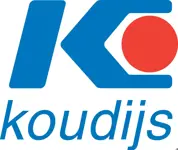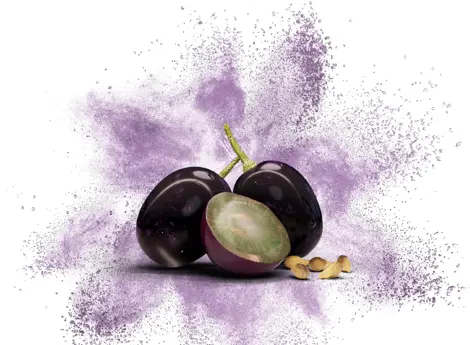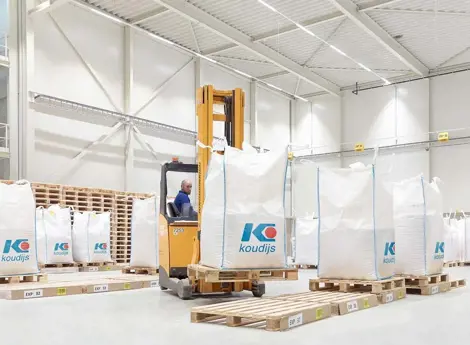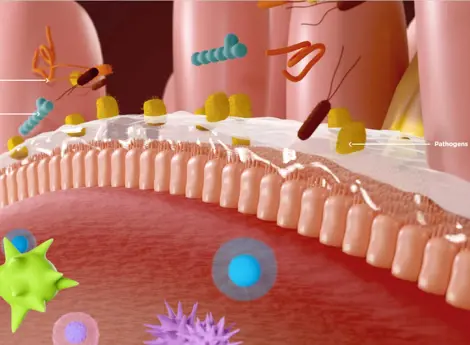A perfect balance - dosing and weighing in a premix factory is a complex process
Some say premix production is easy compared to compound feed production. It’s just a matter of dosing, mixing, and bagging a bunch of powdery raw materials, and you're done. Whereas in feed production, you have milling, steam addition, pelleting, and cooling on top of that. This is true to a certain extent; however, premix production has its own challenges.
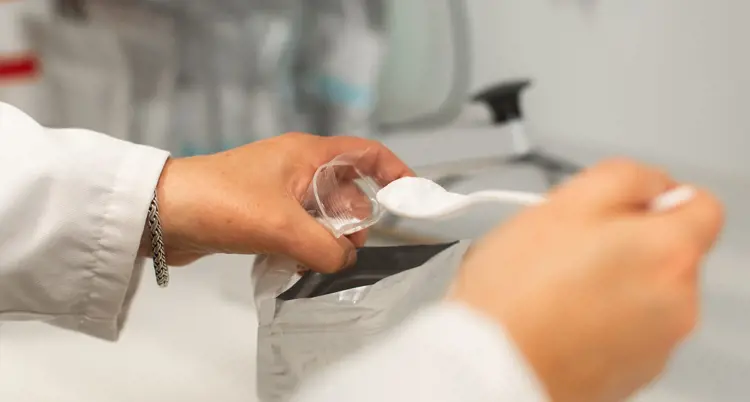
Challenges in premix production
Our goal in premix production is to dose the right raw materials in the desired quantities, leading to homogeneous, free-flowing, and stable premixes over time, every day, in every batch. This is not so easy, taking into account that we work with over 175 raw materials. Most of which can't be identified by the eye, each with its specific physical and chemical characteristics.
Good quality control of incoming goods is essential
It is hardly possible to analyze all the required nutrients in final products; therefore, it is crucial to know the quality of the incoming raw materials. In our premix factory in Veghel, we can identify almost all raw materials to a supplier-product level within one minute. For example, we can distinguish vitamin A1000 from supplier A compared to vitamin A1000 from supplier B. Based on this identification for each batch of each supplier and using an internal barcoding system, each raw material is allocated to the right silo.
Dosing and weighing, a delicate balance between speed and accuracy
In premix production, the inclusion of raw materials can vary greatly. The inclusion of macro ingredients like limestone, salt, magnesium oxide, and amino acids can vary between 10 kilograms to 1500 kilograms per two-ton batch. Micro ingredients like vitamins can vary between 200 grams to over 25 kilograms per 2-ton batch. So, the dosing range is more than 100-fold.
Therefore, during the design of the factory, very close attention was paid to this fact. Factors included are silo capacity and silo allocation (in other words, raw material allocation) to the different scales. This includes the capacity and accuracy of the scales and ventilation/air extraction of the scales to assure accurate weighing. The type of dosing equipment, either augers of 40, 60, or 80 mm diameter with closing valves or dosing (grid) slides, aims to obtain the best balance between the capacity versus accuracy of the dosing equipment.
Additionally, the software/controllers used are very important. There needs to be reliable, constant feedback between the scales and dosing equipment so that a high speed of dosing can be reached while maintaining accuracy.
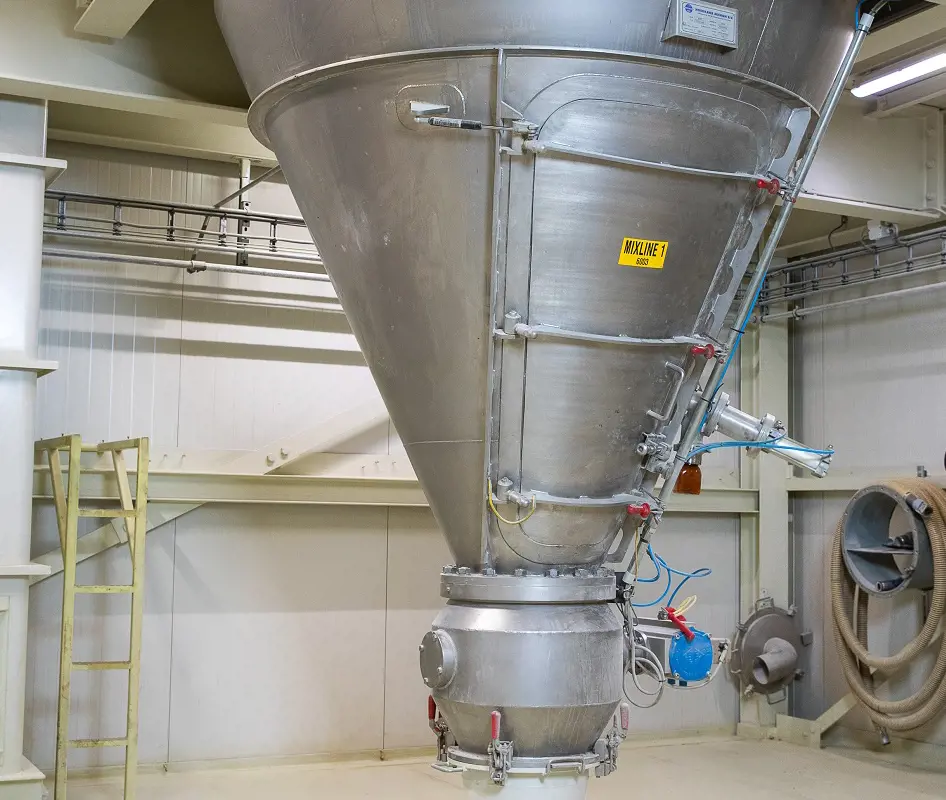
A combination of accuracy, production speed and different dosing quantities
In order to keep the dosing tolerance as low as possible for each silo, we know the accuracy of the dosing equipment and the accuracy of the scale, as they are connected. There is no use in setting the scale steps at 2 grams if the smallest dosing amount is 10 grams. When setting the dosing tolerances, we work with a combination of percentage and absolute weight. At low inclusion rates, we work with a percentage of the desired amount, while at higher inclusion levels, we work with an absolute number in kilograms.
For example, when dosing a raw material at a very low inclusion level, the acceptable deviation ranges from 0.01 kilograms to 0.2 kilograms (equivalent to 5% at 0.2 kg). From 0.2 kg onwards, a 5% dosing deviation is acceptable until reaching 0.4 kg (equivalent to 0.02 kg). Beyond 0.4 kg, a maximum overdosing of 0.02 kg is accepted, regardless of the required dosage in a batch. If, for instance, 10 kg is required in a premix batch of 2 tons, the maximum permitted deviation is 0.02 kg or 0.2%.
So, by using this combination a high level of accuracy can be obtained in balance with production speed at different required dosing quantities.
We consider premixes a specialty
To produce premixes containing all the essential nutrients necessary to support the production, health, and quality of our animals and end products, specialized knowledge is required. This specialization involves expertise in raw materials and formulation, as well as state-of-the-art factory and production knowledge. At Koudijs, we have this expertise.
If you are interested in learning more about our premix factory, please contact your Koudijs representative.
About the author

Marko Schuring
Manager Technical Support
Do you have any questions or would you like more information? Get in touch with Marko.
